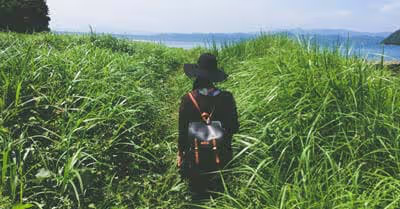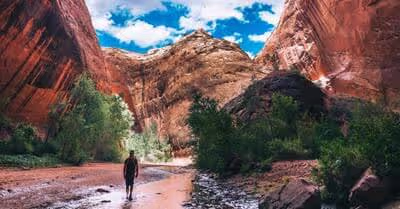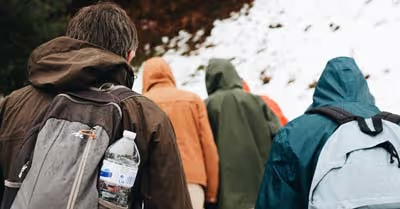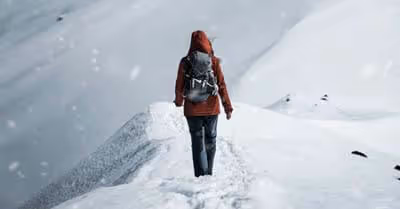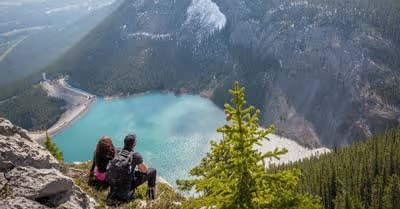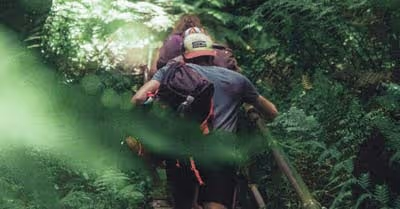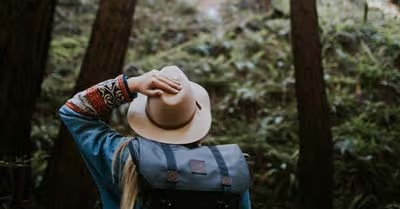Table of Contents
3-Day Backpacking Checklist:
The Right Kind of Backpack
Before you start packing up your backpack, you're going to need to make sure you have the right kind. The term "backpack" is used to describe pretty much any bag you can sling over your shoulder and wear on your back, but the type of backpack you'll be needing for a multi-day backpacking excursion is generally much more specific. Outdoors shops will have plenty of high-quality backpacks you can choose from that will provide you with a large amount of space and will also work to protect your contents from some amount of poor weather and wear-and-tear.
If this will be your first time backpacking, don't rush it when it comes to choosing the right backpack. The right fit is extra important-- if your backpack is even slightly more uncomfortable than it needs to be, it could easily mess up your entire trip. As well, it's very important that you make sure that whatever backpack you choose is just the right size. If it's too small, you won't have enough room, and if it's too big, you'll be overburdened.
Take a look at our list of the best lightweight hiking backpacks.
The Right Kind of Clothing
Again, before we get into the real survival supplies, making sure you have the right kind of clothing can make a gigantic positive difference when it comes to long backpacking hikes. You'll need to make sure you don't get too cold, but also that you don't get too warm. As well, you'll need to make sure that no extraneous clothes become a burden, weighing you down should you end up needing to remove them.
Understanding where and when you'll be backpacking can help you decide what type of clothing you will suit you best. It's always best to play it safe and make sure you have clothing that will keep you safe and comfortable, but it's not a great idea to over-pack and bring along so many different pieces of clothing that you get overwhelmed.
Your best bet when backpacking is to bring along a few good and simple layers, such as a moisture-wicking under-layer, a thin and easy-to-dry shirt and pair of pants, and a simple fleece windbreaker as an outer-layer. Moisture-wicking clothes are incredibly important, as getting wet and not being able to dry off completely is one of the biggest dangers for backpackers on long trips. With these simple layers, you'll be able to stay warm if you need to, stay cool if you need to, and, most importantly, stay dry.
Tent/Sleeping Bag/Sleeping Pad
There are many schools of thought when it comes to what sleeping supplies a backpacker needs. This is definitely one of the areas where the decision is largely dependent on the backpacker's own personal level of comfort. There are many different resources available to help backpackers get a good night's sleep, from tents, to sleeping bags, to sleeping pads.
Minimalist backpackers should be good with nothing but a sleeping bag and maybe a tarp if the weather is acting up. A good heavy-duty sleeping bag will be able to keep you nice, warm, and comfy without the need for a tent, and the tarp will be able to provide you with shelter from rain so you don't get soaking wet. With these two things, many backpackers should feel they have everything they need to get a good night's sleep.
However, for those backpackers who feel like they may need a little more comfort, there are tents and sleeping pads that can be folded up to a small enough size where they won't prove too much of a burden when taken on multi-day backpacking excursions. If you think you're going to need this little extra help sleeping, you should be able to easily adjust the contents of your backpack to make room.
Stove/Fuel/Kitchen Supplies/Food
Like with sleeping supplies, cooking supplies and food are another area where it really depends on the comfort level of the backpacker. Some backpackers bring their own food, some backpackers bring supplies so they can find and catch food out in the wild. If the latter is the case, it is generally a good idea to bring along some type of supplies that will easily allow you to cook whatever food you catch.
Backpackers who don't want to worry about food too much on their hike may find an assortment of trail mixes and health food bars can provide them with all of the sustenance and nutrition they require without ever needing to light up a flame. However, many others will still opt for real meals, either bringing along dehydrated ones they can heat up on a portable stove, or hunting or fishing for small prey. In this case, you might want to bring along some fishing and hunting supplies, a small portable fold-up stove that runs on tinder and kindling and a small pot with some utensils.
Supplies for Water Treatment
One of the best friends a backpacker can have is a water storage container with a filter. These containers, oftentimes collapsible, will easily allow you to fill up with water at any stream and then filter that water so that you can drink it. That means that, with the right water storage container, you will be able to have water wherever you go. This one from Hydrapak is a great option to consider.
No matter what type of water storage container (or hydration reservoir, as they are sometimes called) you choose, you'll want to make sure to both have a filter that fits it, and that you have enough filters to last your entire trip. There are all different filters that fit all different storage containers, with storage containers typically being designed to work with only some specific filters. Filters can last a while, but will always have their limits (generally well over 20 gallons of water), so make sure you bring along however many replacement filters you think you may need (and one more, just in case).
Multi-Purpose Pocket Tool
You don't want to bring along an entire toolbox with you on your backpacking trip, but a small amount of tools will always be a necessity, even on the most minimalistic of backpacking excursions. A fine multi-purpose pocket tool, then, should be seen as an absolute must on backpacking excursions of any length. A multi-purpose pocket tool can give you the means to hunt, defend yourself, prepare food, eat, fix things, partake in crafts, and make any alterations needed to your current supplies.
First-Aid Supplies
Finally, backpackers are always going to want to include some amount of first-aid supplies . Thankfully, there are many simple and easy pre-made first-aid backpacking kits, such as this one from Protect Life that will give you everything you need without taking up too much room. You can either purchase one of these kits outright, or simply look at what they contain as inspiration to make and assemble your own.
First-aid kits for backpacking will generally include:
- Wide variety of band-aids in different shapes and sizes
- Tape
- Tourniquet
- Medical scissors
- Tweezers
- Gauze
- Sanitary products
- Cotton balls
- Antiseptic
They can be more or less complicated, but most first-aid kits you find for the purposes of backpacking will at least include those essentials. Other things they may include are blister pads, safety pins, and eye wash. If you have a good enough multi-purpose pocket tool, you may be able to whittle down your own first-aid kit to include not much more than gauze, band-aids, antiseptic, and maybe a tourniquet and some medical tape, just in case of an emergency!
Recent Articles



